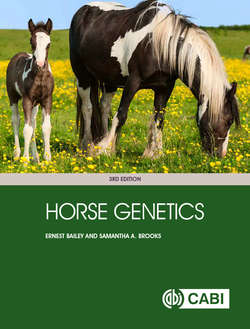Читать книгу Horse Genetics - Ernest Bailey - Страница 23
На сайте Литреса книга снята с продажи.
Genomic Data on Horse Evolution and Domestication
ОглавлениеWhat was the process for horse domestication? Once the idea of domesticating horses was launched, did people independently capture and domesticate local horses? Or were horses domesticated in one region and then spread around the world? Or might domestication have been a combination of the two?
Earlier studies used DNA from modern breeds, compared the genomics of modern horses, and drew inferences about the domestication of the horse based on geographical distribution and genetic variation. Comparing the diversity among horses led to construction of phylogenetic trees, such as that in Fig. 1.1 (Chapter 1). These trees were very satisfying because they corresponded to what we know about the origins of these different horse breeds and their geographical distribution. We could also use genomics to investigate the relative contributions of mares and stallions. The cell has a small organelle called the mitochondria that is almost always inherited from the egg, therefore it is a measure of the influence of female bloodlines (Chapter 20). Conversely the Y chromosome is a male-determining piece of DNA and is a measure of the stallion’s influence, over many generations, on a population. Considerable diversity was observed for the mitochondrial DNA suggesting that many mares were recruited during the domestication process (Vila et al., 2001). Conversely, initial studies of the Y chromosome showed limited diversity. This led to the initial hypothesis that early domestication involved one or few males but many females. However, a beautiful hypothesis can be undone by future discoveries! aDNA studies painted a different picture.
Although modern horses have limited diversity for the Y chromosome, aDNA studies showed that stallions had lots of diversity for Y until about 700–1000 years ago (Wallner et al., 2017; Wutke et al., 2018; Fages et al., 2019). About that time, it appears that stallions from the Middle East became popular in breeding programs throughout the world. One stallion must have been particularly popular and had a large impact on European horse populations. Extensive use of descendants of this stallion led to the modern disappearance of other Y chromosomes in most breeds. Only breeds in remote regions, such as Iceland, Norway, and North Eastern Asia preserved the ancient variants for the Y chromosome. At the same time, aDNA studies show a dramatic drop in genetic diversity among domestic horses for all chromosomal DNA during the last few hundred years reflecting rapid convergence of breeding practices and goals around the world. The modern domestic horse is profoundly different from the horses originally distributed around the globe.
